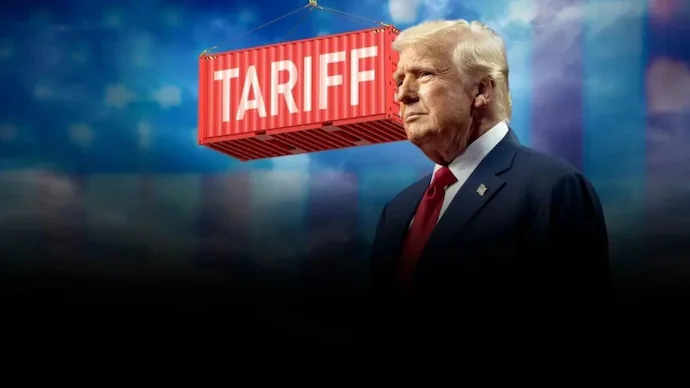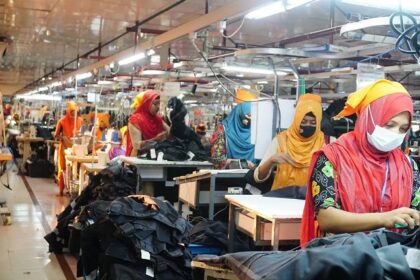By Engr. Md. Abdullah, CEO, Green Stitch (GRS)
A bolt from the blue has struck Bangladesh’s export-dependent economy. President Donald Trump, via the US Department of Commerce, announced plans to impose a sweeping 35% tariff on all imports from Bangladesh, effective August 1, 2025. This move—initially announced at 37% in April and later revised down—targets a nation on the cusp of graduating from Least Developed Country (LDC) status and threatens to cripple Bangladesh’s largest export market, jeopardize millions of jobs, and send shockwaves through its burgeoning economy. The rationale cited includes concerns over market distortions, labor rights, and the impending end of Bangladesh’s duty-free access under the Generalized System of Preferences (GSP) following its scheduled LDC graduation in 2026.
Read Also: Nike Faces $1Billion Tariff Hit
Bangladesh’s Export Lifeline: The Stakes are Enormous
The United States is Bangladesh’s single largest export destination. In the fiscal year 2023-24 (July 2023 – June 2024), Bangladesh exported goods worth approximately $10.2 billion to the US, according to data from the Bangladesh Export Promotion Bureau (EPB) and the US International Trade Commission (USITC). This represents roughly 18–20% of Bangladesh’s total annual exports.
- Dominance of RMG: Ready-Made Garments (RMG) form the overwhelming bulk of these exports, accounting for over 92% ($9.4 billion+) of US-bound shipments. Items include knitwear, woven garments, and home textiles.
- Beyond Apparel: Other significant exports include leather goods (especially footwear), jute products, agricultural goods (like frozen fish), and bicycles.
- Import Relationship: While Bangladesh exports heavily to the US, imports are significantly lower. In FY 2023-24, Bangladesh imported around $2.1 billion worth of goods from the US, primarily consisting of cotton, machinery, aircraft parts, wheat, and soybeans. This creates a substantial trade surplus for Bangladesh with the US.
Year-on-Year Trajectory: Growth Under Shadow
Recent years show steady, though slowing, growth in the US market:
- FY 2022-23: Exports to US: ~$9.7 billion (Source: EPB)
- FY 2023-24: Exports to US: ~$10.2 billion (Estimated, EPB/USITC) — a growth of roughly 5%.
- Pre-Pandemic (FY 2018-19): ~$6.7 billion (Source: World Bank)
While this indicates significant long-term growth (especially post-COVID), the pace has recently slowed amid global economic uncertainty and LDC graduation concerns. The latest 5% growth is notably lower than the 15%+ rebound seen in earlier post-pandemic years.
The Impact Assessment: A Potential Economic Earthquake
A sudden 35% tariff is not an adjustment; it’s a potential catastrophe. Analysis by international bodies and local economists paints a grim picture:
A 35% tariff would instantly price most Bangladeshi RMG products out of the US market,” states Dr. Zahid Hussain, former Lead Economist at the World Bank’s Dhaka office.
Read Also: Vietnamese Manufacturers Brace for Uncertainty as US Tariff Policy Looms
“Competitors like Vietnam (with various FTAs), India, and even regional players within trade blocs will gain an insurmountable cost advantage.”
The Policy Research Institute (PRI) of Bangladesh estimates an immediate potential loss of $3–4 billion in annual exports in the first year, with apparel bearing the brunt.
The RMG sector employs over 4.4 million people, mostly women. The BGMEA President, Faruque Hassan, warned, “This tariff could force the closure of hundreds of factories, particularly SMEs operating on thin margins (typically 5–15%). We are staring at potential job losses exceeding 1 million in the worst-case scenario.”
The EPB warns of significant GDP drag. RMG contributes over 11% directly to GDP and drives critical ancillary industries (transport, banking, logistics). Lower exports mean weaker foreign exchange reserves and reduced government revenue.
Foreign Direct Investment (FDI), especially in export-oriented manufacturing, may stall as competitiveness falters.
Stakeholder Reactions: Alarm, Anger, and Calls for Action
The Ministry of Commerce called the move “disproportionate and devastating.” Foreign Adviser Md. Touhid Hossain said, “We are engaging in urgent diplomatic channels at the highest levels, including leveraging our relationships with US lawmakers and the Department of Commerce, to seek a reversal or phased implementation.”
Industry leaders, including BTMA President Mr. Showkat Aziz Russell, stressed that “We’ve made significant progress in factory safety (Accord/Alliance) and wage reform. Punishing the entire sector undermines these efforts.”
Prof. Mustafizur Rahman (CPD) called for immediate diversification: “We must target markets like India, Japan, and non-traditional EU countries, and invest in high-value sectors like ICT, pharma, and leather.”
Kalpona Akter of the BGIWF voiced concerns: “Workers are terrified. We fought for better conditions, and now our survival is at stake.”
The ILO and World Bank both emphasized the risks of preference erosion post-LDC graduation and called for transition support—not punitive measures.
Navigating the Storm: Potential Pathways Forward
- Diplomatic Engagement
- High-level visits to Washington DC.
- Lobbying key US Congress members and retailers.
- Partnering with EU, UK, and India to apply diplomatic pressure.
- Goal: Delay, phase-in, or partial exemptions from the tariff.
- Market Diversification
- Targeting markets with GSP+ or FTAs (EU, UK, ASEAN, India).
- Diversify into higher-end leather goods, pharmaceuticals, light engineering, ICT.
- Improving Efficiency & Compliance
- Investments in automation, logistics, power reliability, port infrastructure.
- Enhance labor and environmental compliance to qualify for alternative preference schemes.
- Domestic Stimulus & Safety Nets
- Prepare social protection for displaced workers.
- Boost domestic consumption and SME access to capital.
- Explore WTO Options
- If bilateral diplomacy fails, seek WTO consultations over tariff proportionality
Read Also: Footwear Industry Navigates Tariff Uncertainty Amid U.S.-China Trade Talks and Temporary Pause
The Broader Context
As the Financial Times observed, “The US move reflects rising global protectionism, often leveraging labor and environmental issues for trade leverage.” The EIU noted that LDC graduates like Bangladesh face “preference cliff-edges” and urged fairer global transitions.
The Daily Star editorial (July 8, 2025) noted, “Beyond frantic diplomacy, this crisis demands a fundamental rethink of our economic model. Over-reliance on a single sector and market was always a strategic flaw.”
A Defining Moment
The 35% US tariff, effective August 1, 2025, represents more than a policy shift—it threatens Bangladesh’s economic engine and millions of lives. The short-term impact could mean billions in lost exports and widespread unemployment. Yet, beyond the crisis lies an opportunity: to reform, diversify, and strengthen resilience. Strategic vision and unified national action are now imperative.






